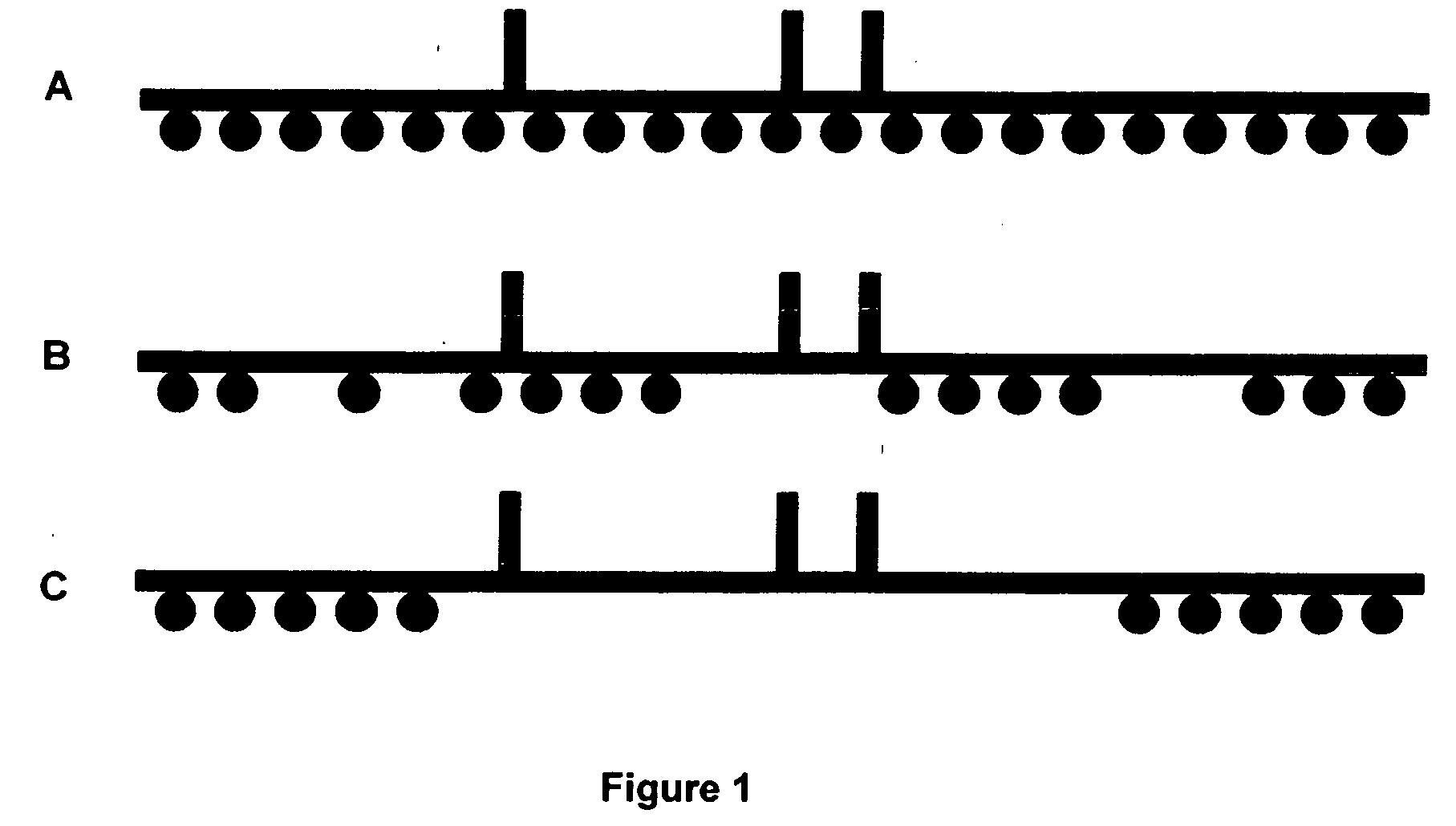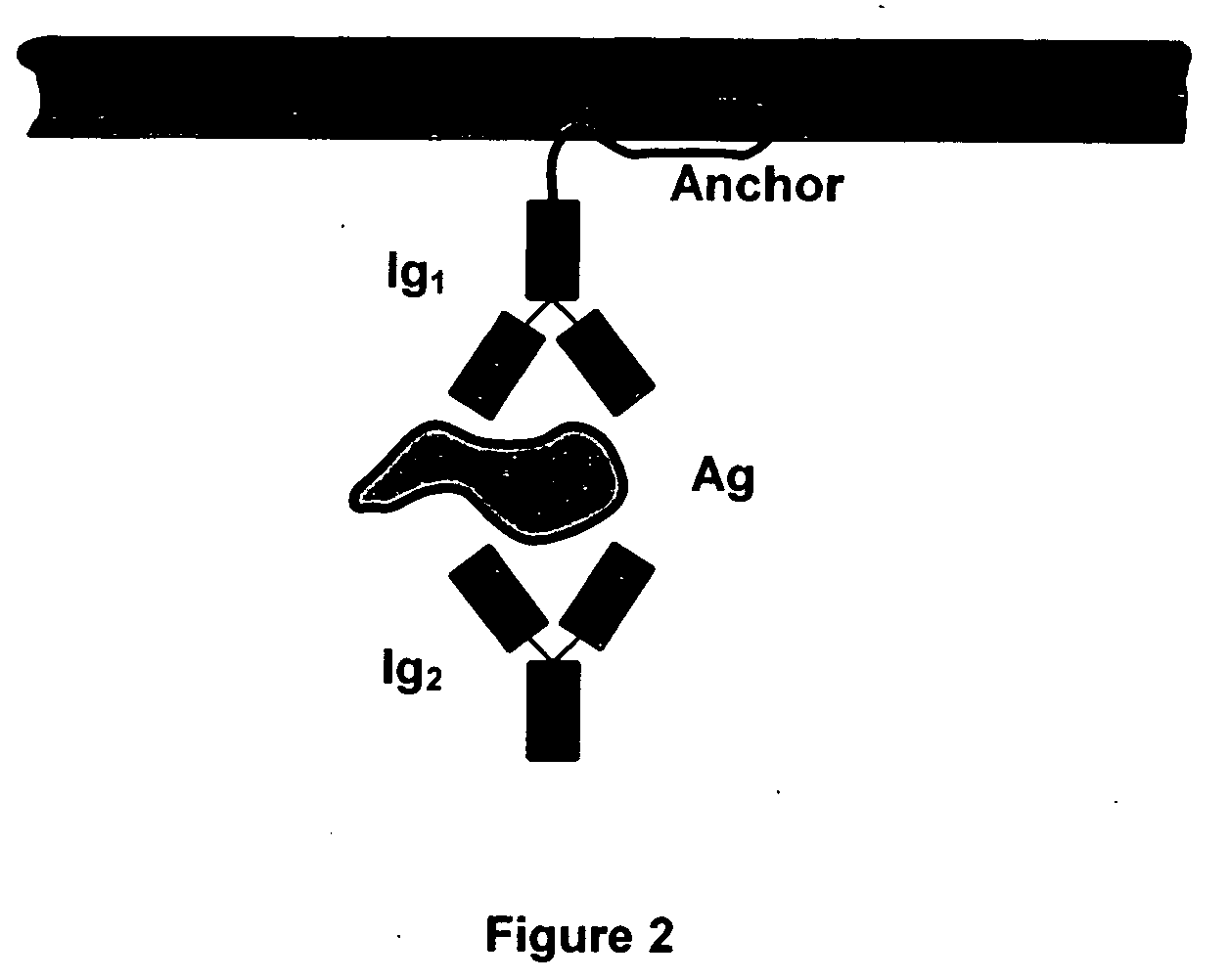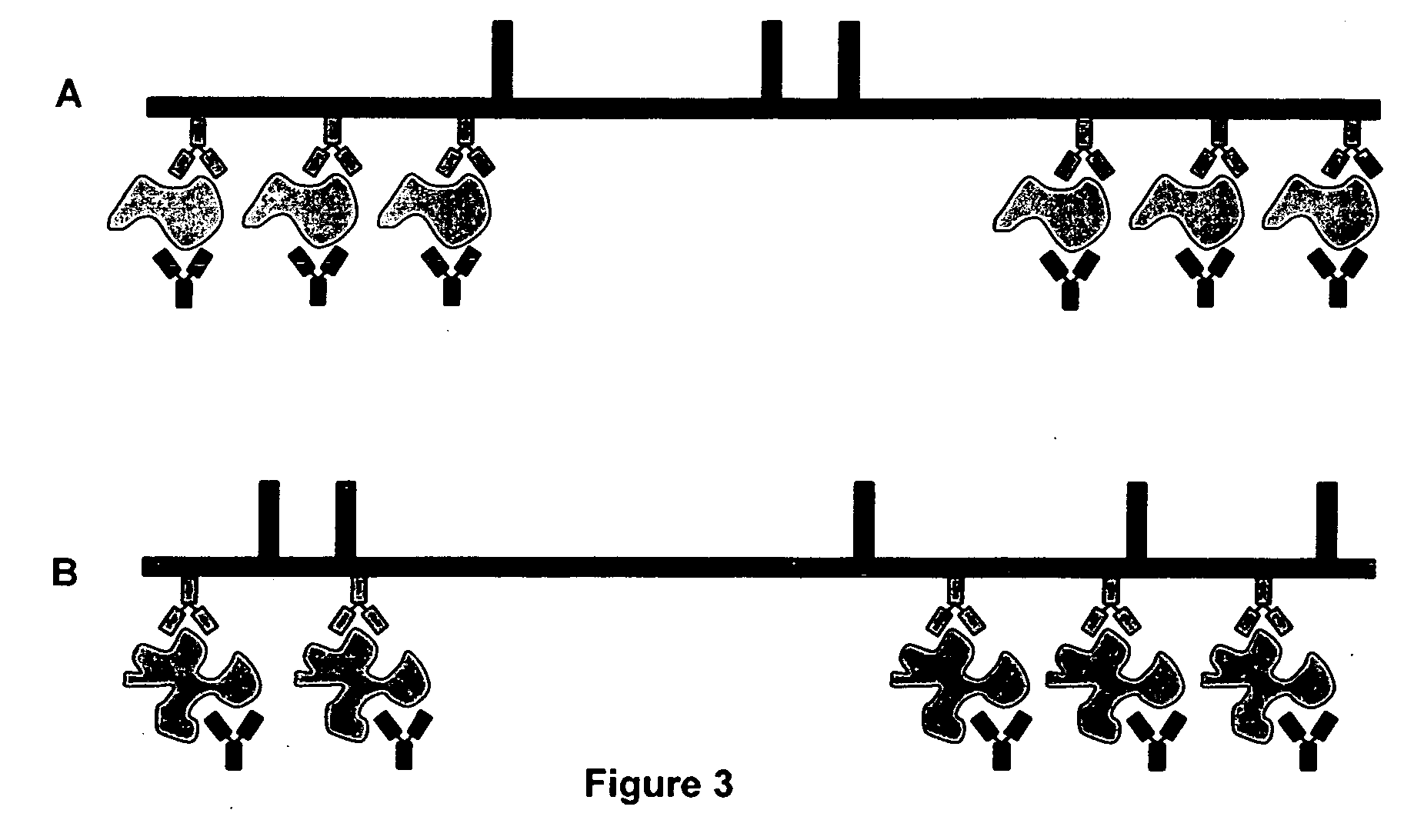Detection and quantification of analytes in solution using polymers
a polymer and analyte technology, applied in the field of detection and quantification of analytes from samples, can solve the problem of limited overall analysis time and achieve the effect of high degree of multiplexing
- Summary
- Abstract
- Description
- Claims
- Application Information
AI Technical Summary
Benefits of technology
Problems solved by technology
Method used
Image
Examples
example 1
Comparison with Luminex® Liquid Array System
[0142] The pathogen detection system based on Luminex® liquid array and flow cytometer is compared to the system of the invention. Luminex® reportedly provides a multiplexing factor of 100 and detects proteins concentrations as low as 10 pM [1]. It reportedly can be used to detect pathogenic organisms such as bacteria and viruses. Although it reportedly can interrogate several thousands of beads per second using the Luminex® LX-100 (Luminex Corp., Austin, Tex.) flow cytometer, overall analysis time is restricted by the interaction of bead-immobilized antibodies with the antigens dissolved in analyzed solution. This time is at least 30 minutes and can be even longer if higher sensitivity is required.
[0143] The system described herein is designed for identification and quantification of multiple analytes such as but not limited to pathogens using single molecule polymer (e.g., DNA) mapping. It can be used to detect any substance against wh...
PUM
| Property | Measurement | Unit |
|---|---|---|
| size | aaaaa | aaaaa |
| length | aaaaa | aaaaa |
| diameter | aaaaa | aaaaa |
Abstract
Description
Claims
Application Information
 Login to View More
Login to View More - R&D
- Intellectual Property
- Life Sciences
- Materials
- Tech Scout
- Unparalleled Data Quality
- Higher Quality Content
- 60% Fewer Hallucinations
Browse by: Latest US Patents, China's latest patents, Technical Efficacy Thesaurus, Application Domain, Technology Topic, Popular Technical Reports.
© 2025 PatSnap. All rights reserved.Legal|Privacy policy|Modern Slavery Act Transparency Statement|Sitemap|About US| Contact US: help@patsnap.com



